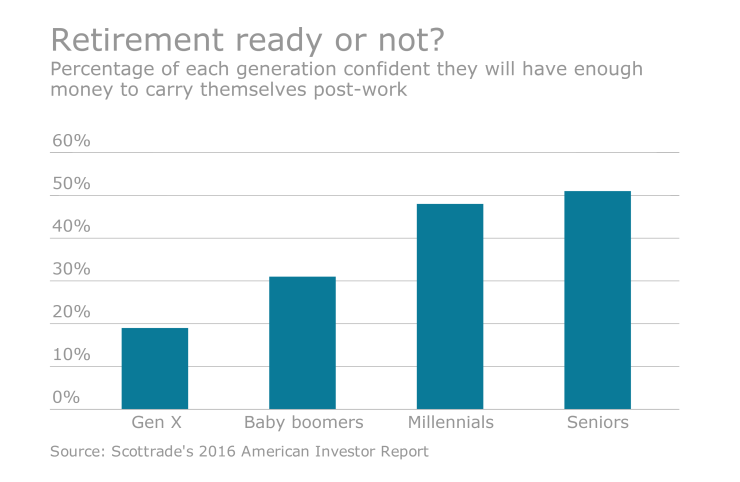For employers continuing to struggle with getting their employees invested in retirement, Principal Financial Group executive Gerald Patterson has a solution: Don’t put the onus on employees to enroll in plans or to invest enough — instead, do it for them automatically.
“If you really want to be serious about this, if you want your employees to save money for retirement, make it mandatory,” he said this week at the International Foundation of Employee Benefit Plans’ annual conference in Orlando, Fla.

Employees can have the option of opting out of automatic enrollments or default contribution rates imposed by employers, but the majority — data has suggested — will not do so, said the senior vice president of retirement and investor services.
“By just giving them a tool, you can’t expect everyone to engage in it, because they don’t and they won’t,” Patterson said. “If you want rates to soar, you have to make it mandatory.”
It’s all part of best practice plan design, Patterson said. That design includes:
- Auto-enroll employees and default high. Traditionally, initial auto-enrollment rates have started at 3%. But instead, Patterson said, “start your employees at 6% and auto-escalate it every year until they hit 10%.”
- Stretch the match. “One of the biggest mistakes we make with a match is we do it to benefit employees, but employees think that’s how much they should save,” he said. Instead, employers should consider stretching their matching contributions over a broader employee deferral.
- Make sure automatic enrollment is for all employees, not just new hires. “A lot of employers do automatic enrollment for new employees,” he said. “[By doing so] you are assuming your best, most committed employees know what they are doing with retirement. But there is no direct correlation between valuable employees and retirement. Sweep your employees once a year into automatic enrollment. If they want to opt out, they can opt out.”
- Embrace technology, including virtual financial coaches. “One of the top reasons people don’t use financial advisers is because they are ashamed — they have no financial savings, they are awash in debt,” Patterson said. “But tools like interactive virtual coaches can have astounding results. If you are looking for tools out there to help your employees, there are plenty.”
Those strategies are part of a larger mission — less focus on education, more on behavioral changes. Though many industry insiders say retirement educational efforts are still needed, Patterson said that’s not the case; employees know they need to save for retirement. They just aren’t doing it.
“It’s less and less about education — [employees] have been given the drill. The problem isn’t education; it’s behavior. There’s a gigantic difference between what people say about their benefits and what they do.”
Significantly, Patterson said, employees who don’t save enough money for retirement “don’t have a sense of urgency we would expect them to have. They have a plan B: go back to work. But that’s not a good reality. Our minds and body won’t necessarily allow that. The danger of outliving your retirement savings is real; it’s happening.”
See also:
“It’s a terrible strategy,” he continued. “This behavioral barrier that we can go back to work is a real challenge. People don’t run out of retirement money at the beginning when they’re 65 and can go back to work; they run out when they’re 80 and they can’t go back to work.”
Another significant challenge? The “admiring a balance phenomenon”— meaning employees feel good about their 401(k) balance even when it’s not nearly enough.
“It’s shocking how comfortable employees are with their savings — and it’s the same with people that have $85,000 to $1.5 million. But they’re not realizing that they might have been making $80,000 a year and their $100,000 balance isn’t going to last them much past a year and it’s supposed to last them the rest of their retirement. The faucet [of annual income] will be turned off, and your savings balance is all you have left.
“We need to be trying to build education that helps them translate the pile of money to income,” he said.
Those disconnects, as well as other challenges — including the increasing prevalence of a remote workforce, different demographics of workers with differing preferences and priorities, and a priority on healthcare benefits — are making the retirement conversation harder to have, he said, but more imperative than ever.
By implementing best practice 401(k) plan designs, employers are reframing and refocusing initiatives from retirement education to retirement behavior. That also allows employers to focus educational efforts — and dollars — on other pressing matters, including student loan debt or transitioning into Medicare and Social Security, he said.
“If you can get your education to things that matter while letting plan design do the work in retirement, it’s a big, big deal.”





